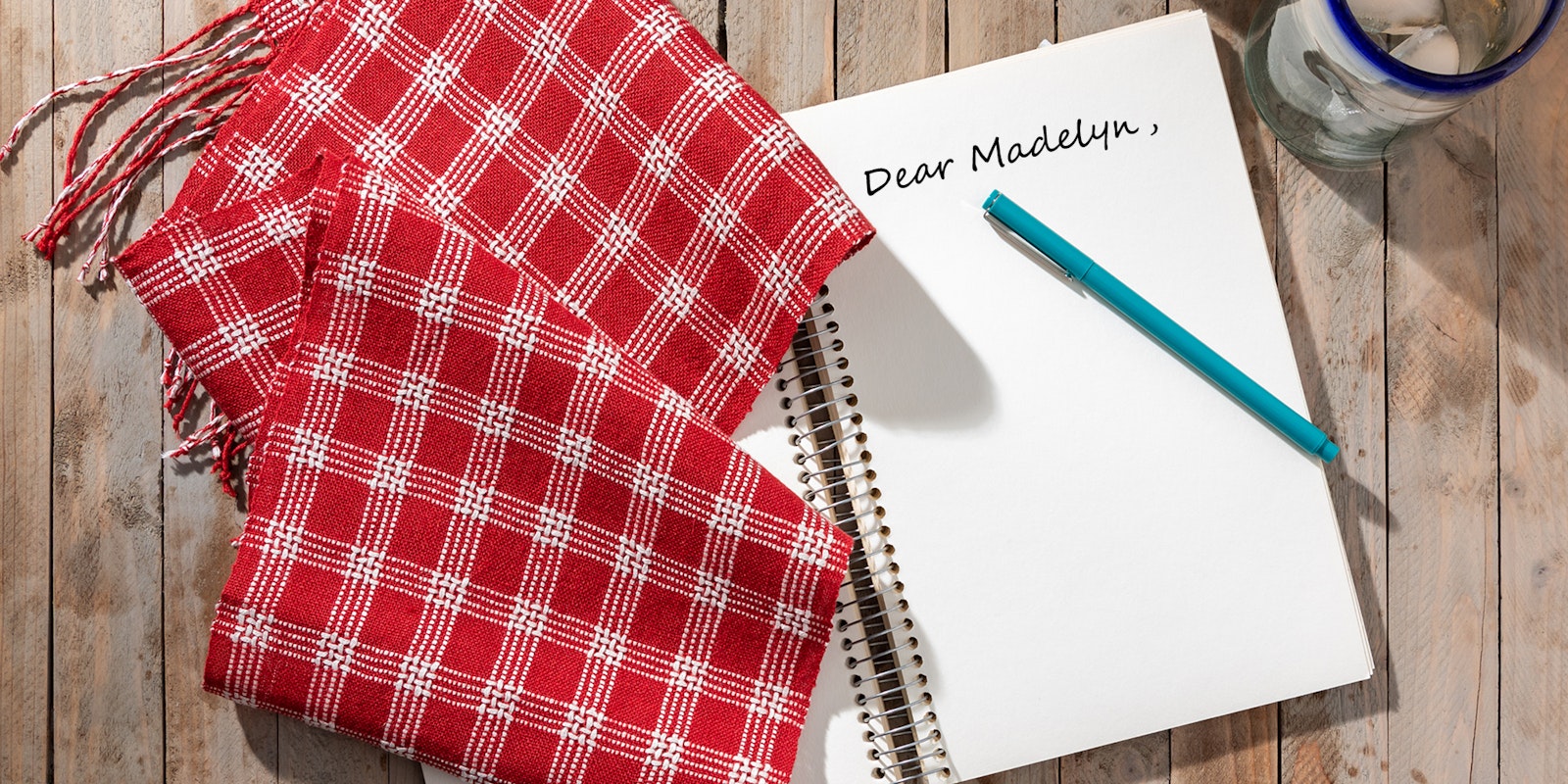Hi Madelyn!
I have watched your Warping Your Loom video and can’t wait to start my next warp. I have two questions, though. In one of the places where you were tying a certain knot, I couldn’t see what your hands were doing. And, when you were demonstrating using the paddle, I couldn’t tell when you moved it up or when you moved it down for sure. Can you describe these two steps to me?
--Nancy Daum
Hi Nancy!
I bet you are talking about the “surgeon’s” knot that I use for the only choke tie I make in a warp chain. A surgeon’s knot is just like a square knot, except when you do the first half of the knot, instead of taking one strand around the other strand once, you wrap around it twice. When you tighten that double-wrap down, it holds while you tie the second half of the square knot in the usual way. This is especially good when you want to tie a very tight knot but another person isn’t handy to put a finger on the first half of the knot. The surgeon’s knot doesn’t work well if the thread you are tying with is very thick; then the double-wrap is too bulky when you tie the second half and interferes with a firm knot.
For your question about the paddle, I believe you are talking about when to move the paddle up and then down (or vice versa) as you make the cross and slide the threads over the two cross pegs on the warping board.
Here is a rule of thumb to follow:
If you have an even number of threads in the paddle, you do the same motion (up or down) at the same peg each time. I usually move the paddle down on the first peg and up on the second peg because that is the easiest order to manipulate when you are coming back up the board and can then go up on the second peg, down on the first.
If you have an odd number of threads in the paddle, you do the same order both ways: that is, up on the first peg and down on the second on your way down the warping board and up on the second peg, down on the first on your way back. Following these rules only means that edge threads will always cross opposite each other in adjacent groups. If you did it “wrong,” the only “bad” consequence would be that the outside threads in adjacent groups would be in the same cross. Not a big deal!
--Madelyn

